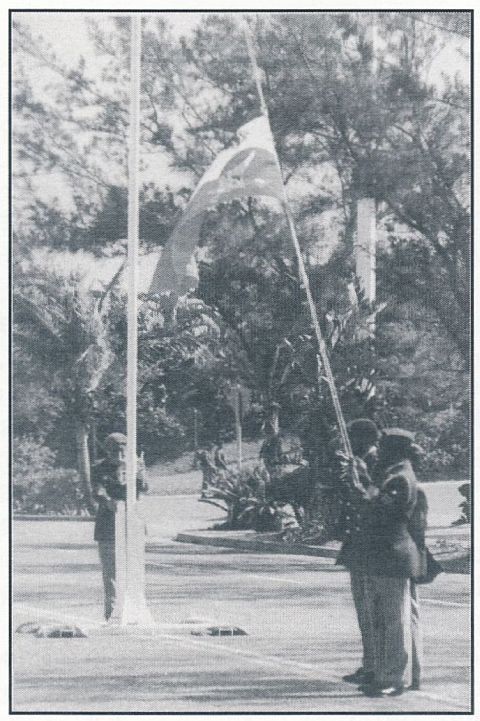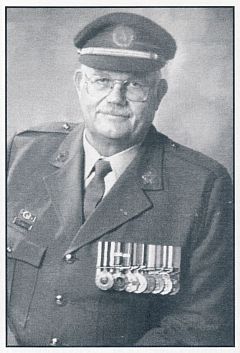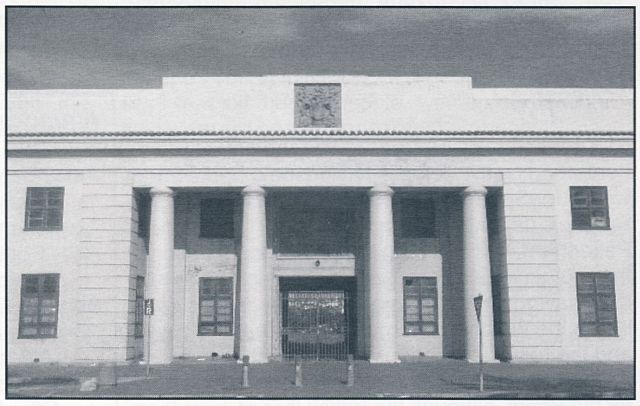

 The South African
The South African
Introduction
The military history of Natal (now known as KwaZulu-Natal) includes the participation of its army units in different wars, battles, skirmishes and in peace-keeping efforts. Natalians have been members of many honoured South African Army units which were involved in, and played a significant role in, South Africa’s chequered military history of soldiering. A former Officer Commanding of Natal Command, Brig J H Pretorius, SD, noted that ‘soldiering has come naturally to the men of Natal’.
As the history of Natal evolved, so too did soldiering in the province. On 11 September 1969, Groups 9, 10 and 11 Headquarters were established. These Army Groups resorted under the authority of Natal Command, which then exercised operational control over a number of South African Army units in the province. For example, in later years, Group 10 Headquarters had two SA Army Citizen Force (CF) units, namely Congella Regiment and Durban Regiment, and six Commando units, Durban South, Durban North, Highway, Oribi, South Coast and Umgeni Commandos, under its command. Soldiering in KwaZulu-Natal was thus widespread and Natal Command served at the apex of the SA Army organisational structure. The Headquarters of Natal Command remained situated along Durban’s Snell Parade at coordinates S 29.50.14 E31.02.05.
The military history of Natal comprised soldiers from different population groups who were engaged in the varied facets of soldiering (in-service on a full-time basis, in-service on a part-time basis and service on a volunteer basis). This soldiering had one objective, namely, to protect the territorial integrity and to maintain security and safety ‘for the peaceful development of all the peoples of South Africa’. Many of the SA Army units in Natal existed until after the turn of the 21st century, whereafter the new political dispensation resulted in their disestablishment.
These former SA Army units were not the only the casualties under the new dispensation. Natal Command itself was also closed. Nowadays, only the white, peeling and yellowtinged façade of the former entrance building still stands
The Natal Command site (which was granted to the Department of Defence on 12 February 1937 by the City Council of Durban on behalf of its citizens) today stands vacant. The area is almost forlorn and appears lifeless except for the few hadeda ibises (Bostrychia hagedash) foraging in this historical soil. But this land, its former military buildings and barracks contain much forgotten history, and an armoury of human stories. Given this, the question arises: Who were some of the most senior in-service full-time SA Army personnel stationed at Natal Command until it was officially closed on 23 November 2000? The aim of this article is to answer this question with a brief discussion of the military careers and highlights of two such men during their tenure at Natal Command.

Last ceremonial lowering of the
Natal Command Headquarters’ flag
on 23 November 2000.
Oral history
The two most senior ranking military personnel (a commissioned officer and a non-commisioned officer) during this period were the General Officer Commanding, Major-General C E le Roux SD SM MMM and the Command Sergeant Major, WO1 J M Goodrich PMM MMM. Fortunately, both these former soldiers could be contacted easily for interviews in 2018. Thus, their respective oral histories and some of their memorable command functions at Natal Command have been accurately recorded and documented. It was felt that they would both be in favourable positions to furnish the reader with a meaningful perspective and insight of some of Natal Command’s history. Using this oral testimony, this article aims to close the information gap that exists regarding this history.
The selected men were both requested to recall three personal and significant highlights of their military careers at Natal Command. These highlights were simply recorded by the author, who was familiar with military matters in KwaZulu-Natal. As the article developed, some additional details were added during later interviews. The result is a career summary of the two men interviewed, with a specific focus on their respective military careers and some light shed on the history of Natal Command, including the day it closed down, 23 November 2000. On that day, a combined medal parade and closing parade were held in front of the white façade building of Natal Command, Snell Parade, before the Natal Command Headquarters’ flag was ceremoniously lowered for the last time.
By the lowering the flag, the story of the well-known military landmark building associated with Natal Command, dating back to 1937, came to an end.
General Officer Commanding,
Maj Gen C E le Roux SD SM MMM
Christoffel (Chris) Erasmus le Roux was born on 20 April 1946 in Dundee, northern Natal. At an early age, his parents relocated to Pinetown. He attended Pinetown Boys’ High School and matri culated in December 1963. While at high school, Chris excelled at competitive sport and actively participated in the school’s cadet programme. One of his earliest school cadet outings (in 1959) took place at Natal Command Headquarters. On that occasion, the young teenager never imagined that one day he would be posted to these same headquarters and serve as Natal Command’s last General Officer Commanding (GOC).
When he finished school at seventeen, Le Roux joined the South African Defence Force (SADF). After he completed his infantry training, he was selected to attend the Military Academy in Saldanha. In 1967, he graduated with a B Mil degree from the University of Stellenbosch and, on 21 November of that year, he was commissioned as an officer in the SADF with the rank of lieutenant. He qualified as a paratrooper on 9 October 1970. During his career years serving the SADF, he held various military appointments and postings in South Africa. One such appointment and posting was as Officer Commanding, 1 Parachute Battalion, Bloemfontein, which he held from 1984 until 1988.

The last General Officer Commanding Natal Command,
Maj Gen C E le Roux SD SM MMM
On 18 February 1995, Brig le Roux was appointed Officer Commanding Natal Command. On 1 January 1996, he became GOC Natal Command with the rank of major-general. He served as GOC until Natal Command was officially closed. He left the service of the South African National Defence Force (SANDF) soon afterwards, on 31 December 2000.
During his interviews in 2018, General le Roux recalled three significant highlights of his tenure as OC/GOC Natal Command from 1995 to 2000. Firstly, there was the continual peace-keeping operation during times of political conflict between the ANC and IFP political parties and their respective supporters in KwaZulu- Natal; secondly, the planning and executing of the SANDF Day Parade through the streets of the City of Durban on 29 April 1995; and, thirdly, actively participating in the restructuring of the SANDF (a process involving the amalgamation of eight different defence forces). The SANDF was reorganised according to modern-day organisational principles and this restructuring process eventually led to the closure of Natal Command.
During his distinguished, 36-year career with the SADF and SANDF, Gen le Roux completed more than 300 parachute jumps and was decorated with ten medals. He and his wife Marlyna now reside in Australia and their two married sons also live abroad.
Command Sergeant Major, WO1J M Goodrich, PMM MMM
John Methven Goodrich was born on 12 September 1945 in Pretoria, Gauteng. He completed his school career at Hoërskool Hentie Cilliers in Virginia, Orange Free State, in 1963. He also joined the SADF in 1964. In 1965, he attended an instructor’s course in Oudtshoorn. During his career in the SADF, WO1 Goodrich held various military appointments and postings in South Africa. One such appointment and posting was as Formation Sergeant Major, SA Army Battle School, Lohatla, from 1988 to 1993.
On 1 November 1993, WO1 Goodrich was appointed Command Sergeant Major of Natal Command. He served in this appointment until Natal Command closed down. Like General le Roux, he also left the service of the SANDF on 31 December 2000.

The last Command Sergeant Major Natal Command
WO1 J M Goodrich PMM MMM
During interviews held with WO1 Goodrich, he recalled three significant highlights of his military career at Natal Command: Firstly, training and overseeing 114 military parades at the old Durban International Airport, Reunion, to welcome Heads of State to the 12th Summit of the Non-Aligned Movement held during the period 29 August to 3 September 1998; secondly, organising the parade on 11 November 1999 at Stella Cemetery for the Canadian Prime Minister, The Right Honourable Jean Chretien, who laid a wreath at the graves of Canadian airmen who died during training in the Second World War (1939-1945); and thirdly, being involved with the welcoming parade for Her Majesty, Queen Elizabeth II during her visit to Durban in November 1999. During his exemplary 36-year career with the SADF and SANDF, WO1 Goodrich was decorated with nine medals. He was also awarded the German CSM Muster Badge, Bronze.
John is widowed. He and his late wife, Sandra, had three daughters, all of whom reside in South Africa.
Some concluding remarks
Both men are now in their early seventies. Preserving their respective oral histories is important in adding to the historical record of Natal Command. Oral history has become an international movement in historical research (Vanek, 2013, p180). When one reflects on the above constructed and documented oral history, one can see how easily the military era of Natal Command and the human stories associated with it could have become forgotten. The reality is that Natal Command formally closed down more than eighteen years ago, and its history is now shrouded in a bygone era dominated by a former political dispensation. Nevertheless, Natal Command, as part of the SA Army, accepted its role to guarantee the territorial integrity of the region by upholding the Constitution of the Republic of South Africa. It remained committed to this, ensuring that the internal stability, safety and welfare of KwaZulu-Natal and all its people were safeguarded.
One is left with a sense that soldiering did come naturally to the men and women of KwaZulu- Natal. The story of the erstwhile military commitments of Natal Command now lives on in the oral history accounts of those who once served there. Human stories, particularly in the context of military history, still resonate with some citizens in the City of Durban. The peeling white-and-yellow tinged façade of the former Natal Command entrance building serves as a gentle reminder of that history.

The peeling white and yellow-tinged façade of the former entrance
building of Natal Command. Except for the Chapel, the former military
buildings inside the military base no longer exist.
Bibliography
‘Natal Command: The Military History of Natal 1486-1990.’ Unpublished manuscript, 558 pp. (September 1990).
Natal Command in Focus, 91 pp (1995).
Nkala, G S, and Rodreck, D ‘Oral History Sources as Learning Materials: A Case Study of The National University of Science and Technology’ in Oral History Journal of South Africa, 2015, 3(2): pp 82-93.
Vanek, M, Around the Globe: Rethinking Oral History with Its Protagonists (Prague: Karolinum Press, 2013).
Acknowledgement
An earlier version of this article appeared in the Daily News newspaper, Durban, on 14 March 2019.
About the author
Udo Richard Averweg served as a commissioned officer with the Congella Regiment, based in Durban. He often visited Natal Command on official duties. He is a member of the South African Military History Society (KwaZulu-Natal branch).
Return to Journal Index OR Society's Home page
South African Military History Society / scribe@samilitaryhistory.org